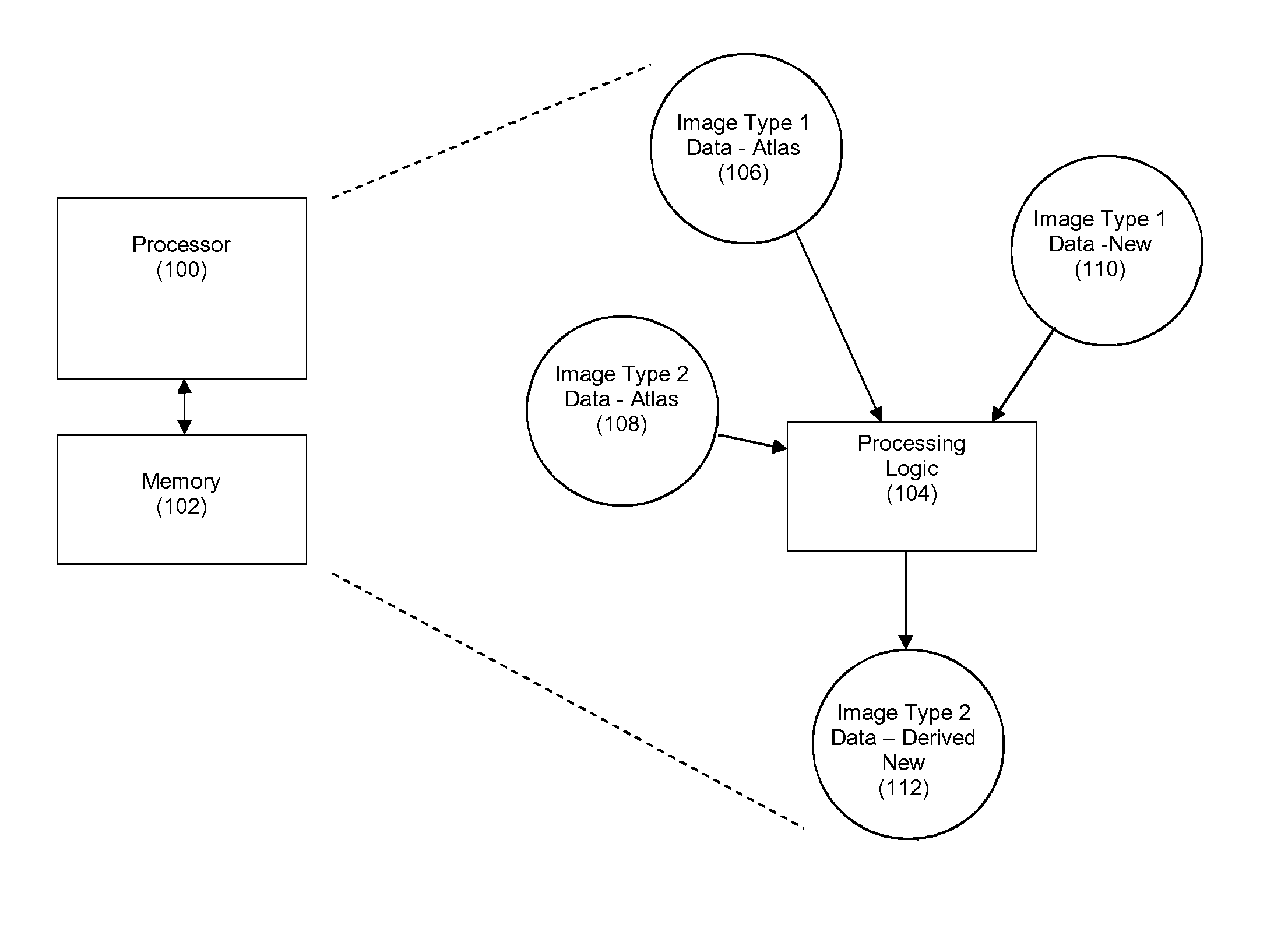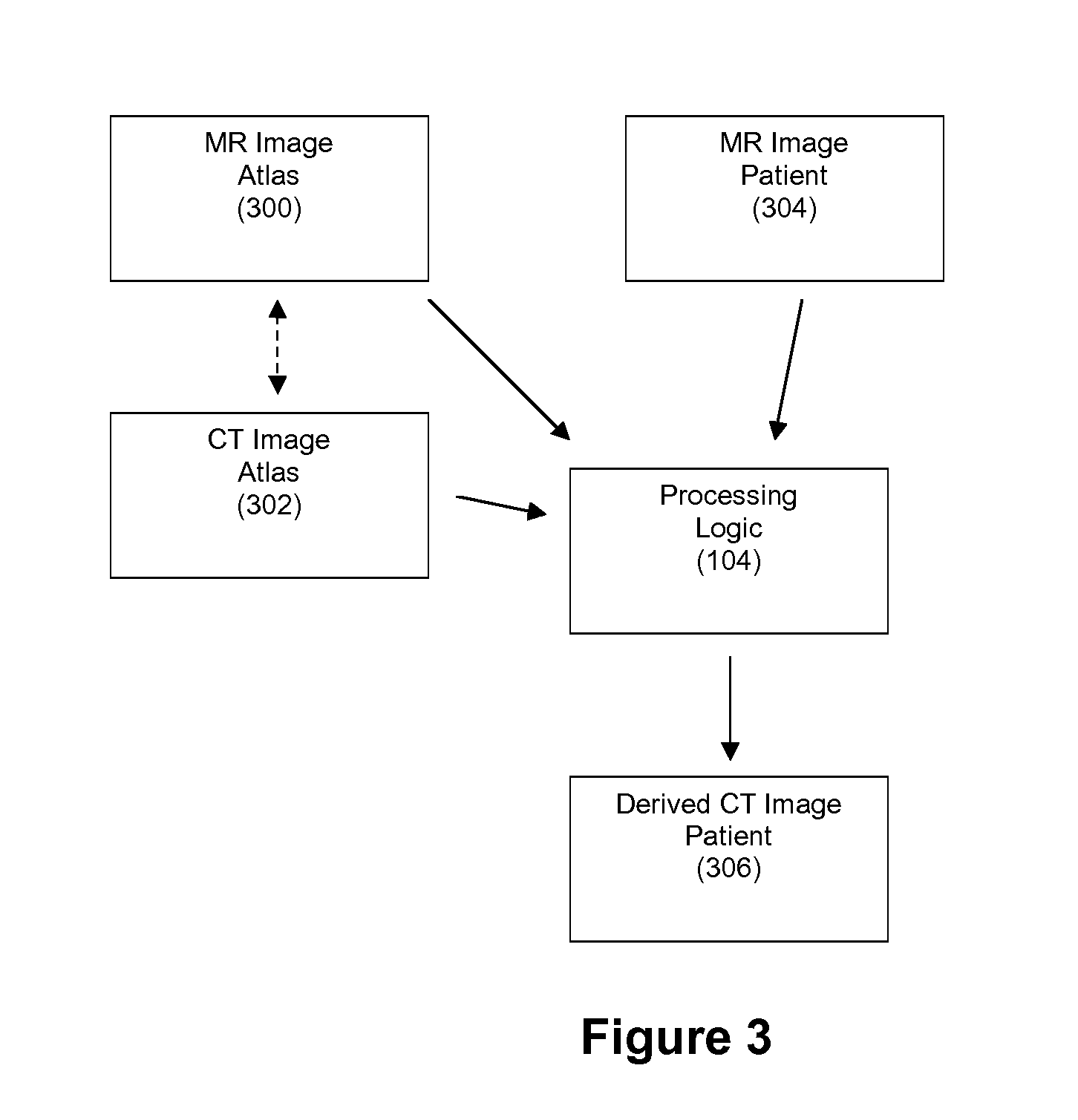Method and apparatus for generating a derived image using images of different types
a technology of derived images and images, applied in image analysis, image enhancement, instruments, etc., can solve the problems of inability to register between the atlas mr image and the atlas ct image, and the error amount will be presen
- Summary
- Abstract
- Description
- Claims
- Application Information
AI Technical Summary
Benefits of technology
Problems solved by technology
Method used
Image
Examples
Embodiment Construction
[0031]FIG. 1 depicts an exemplary embodiment for the invention. As shown in FIG. 1, a processor 100 can be configured to implement processing logic 104 whereby a first image 110 of a first type (Type 1) is converted to a derived image 112 of a second type (Type 2) using an atlas image 106 (Type 1) and an atlas image 108 (Type 2). It should be understood that the images can be either two-dimensional (2D) images or three-dimensional (3D) images. With a 2D image, the image data points can be referred to as pixels. With a 3D image, the image data points can be referred to as voxels.
[0032]The processor 100 can be any processor with sufficient computational capabilities to implement the features described herein. It should be understood that processor 100 may comprise multiple processors, optionally distributed via a network. The programming instructions for implementing the processing logic 104 can be resident on a non-transitory computer-readable storage medium (e.g., memory 102) for ac...
PUM
 Login to View More
Login to View More Abstract
Description
Claims
Application Information
 Login to View More
Login to View More - R&D
- Intellectual Property
- Life Sciences
- Materials
- Tech Scout
- Unparalleled Data Quality
- Higher Quality Content
- 60% Fewer Hallucinations
Browse by: Latest US Patents, China's latest patents, Technical Efficacy Thesaurus, Application Domain, Technology Topic, Popular Technical Reports.
© 2025 PatSnap. All rights reserved.Legal|Privacy policy|Modern Slavery Act Transparency Statement|Sitemap|About US| Contact US: help@patsnap.com



